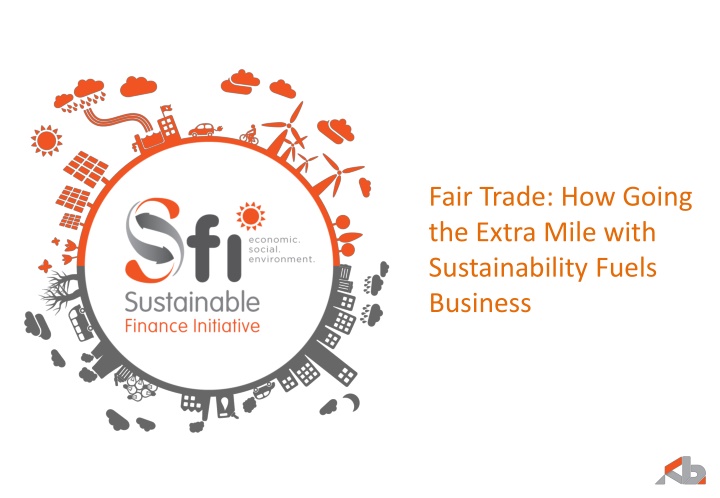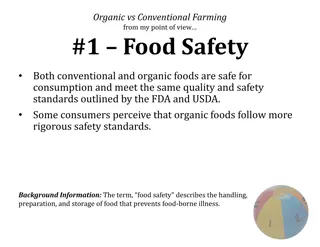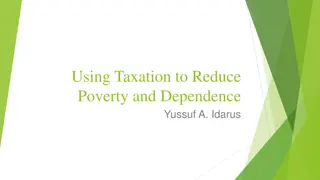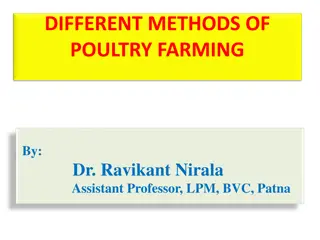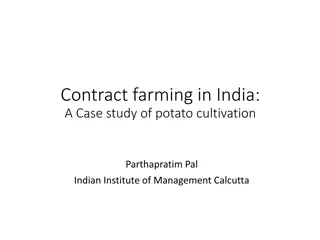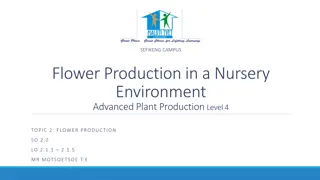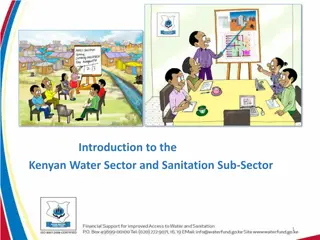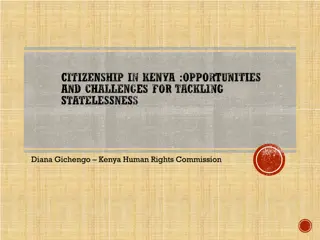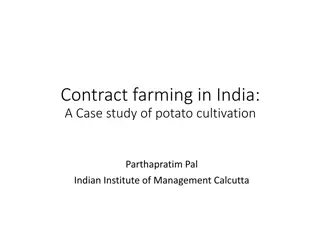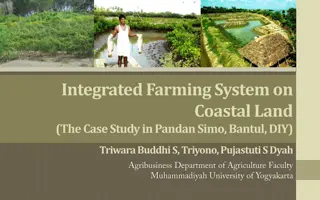Sustainable Business Practices in Kenyan Flower Farming
This case study highlights a medium-sized Kenyan flower farm seeking corporate finance for sustainable expansion, addressing environmental and social issues in the industry, and showcasing the benefits of responsible practices for both businesses and banks. It emphasizes the importance of E&S due diligence, the adoption of fair trade certification, and the positive impacts on market access, employee relations, and productivity levels.
Download Presentation

Please find below an Image/Link to download the presentation.
The content on the website is provided AS IS for your information and personal use only. It may not be sold, licensed, or shared on other websites without obtaining consent from the author.If you encounter any issues during the download, it is possible that the publisher has removed the file from their server.
You are allowed to download the files provided on this website for personal or commercial use, subject to the condition that they are used lawfully. All files are the property of their respective owners.
The content on the website is provided AS IS for your information and personal use only. It may not be sold, licensed, or shared on other websites without obtaining consent from the author.
E N D
Presentation Transcript
Fair Trade: How Going the Extra Mile with Sustainability Fuels Business
Case Study: Business Profile A medium sized Kenyan flower farm. Key infrastructure comprises 40ha of greenhouses, grading hall, cold storage, housing for a back-up generator, a shower block, a chemical store, medical centre, labour camp, and a machinery shed and office. Employs approximately 2000 workers. Request for corporate finance facility for US$2.5 million over 7 years. Finance needed to increase greenhouse capacity by an extra 10ha.
Typical E&S Issues in Flower Farming Include: Drain on water resources due to large volumes needed. Pollution from waste water and pesticides. Poor labour practices and employee grievances regarding wage levels, working hours, social insurance and additional benefits. Disputes with local communities over resources e.g. water Poor practices on flower farms have attracted: Fines or sanctions from regulatory authorities. Media and NGO campaigns critical of practices across the sector. With the potential for: Lost revenue from market boycotts and disruptions to production. Increased costs associated with managing reputational risk.
What did the bank E&S due diligence find? A company differentiating itself by adopting more responsible practices: Certification to a series of environmental and/or social flower labels. A first mover in Kenya to adopt fair trade certification practices. Going beyond legal compliance, and implementing additional measures to improve employee working conditions and lessen environmental impact. E&S management and reporting systems in place a rich source of information for the bank s E&S due diligence but also post disbursement monitoring. Financial benefits emanating from greater access to markets and premium prices.
Benefits to the Banks Portfolio Clients with Access to growing markets Access to premium prices and more stable prices Better productivity levels Better employee relations Technologies that better position them for the future e.g. investment in hydroponic cultivation methods to reduce water and fertiliser consumption Development of sales of fair trade flowers in Germany (in 1,000 pieces)
Lessons Learnt E&S due diligence increases understanding of issues that can impact a client s viability. This is valuable sector knowledge that the Bank can leverage with other clients. Provision of informed advice to other clients on better practices Ability to identify clients better positioned for the future e.g. client s using more efficient cultivation methods Certification to E&S management standards is a useful non-financial indicators of good business management e.g. Fair Trade labels Better E&S management has benefits Improved productivity, access to markets and premium prices. Better performing businesses in the loan portfolio
